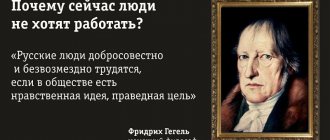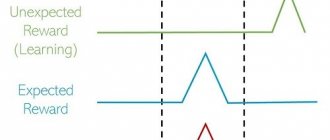The Yerkes-Dodson Law explains why, by striving hard to achieve a goal, we can significantly increase the risk of failure? How can high interest in achieving the desired result play a cruel joke and become, according to the Yerkes-Dodson law, the reason that the case will be abandoned halfway? It turns out that excessive persistence and interest in the result are not always good. But why does this happen?
Discovery of the Yerkes-Dodson law
At the beginning of the last century, British psychologists Dodson and Yerkes studied the peculiarities of the movement of rats through a maze when exposed to electric shocks. At first, as its strength increased, the animals began to run across it faster. But another increase in the strength of the impulses led to an unexpected result - the time to complete the maze did not decrease, but increased.
These data have attracted particular attention from scientists. After a detailed study of the situation, it turned out that the cause of what was happening was excessive stress
It resulted in panic behavior in rats and their chaotic movement through the maze. Therefore, the time to exit it has increased significantly.
More details about the provisions of the law
The famous ancient Roman philosopher Cicero wrote: “Passion is an excessively strong movement of the soul.” And this quote is not about love relationships at all. It refers to an excess of emotion in any activity and perfectly captures the essence of the Yerkes-Dodson Law of Motivation. It is described in more detail by the following two provisions:
- The dependence of the effectiveness of actions on the level of motivation looks like a curve in the shape of an inverted letter U. According to it, with increasing motivation, the quality of activity increases only at the beginning. After reaching optimal motivation, it begins to rapidly decline.
- According to the Yerkes-Dodson law of optimum motivation, there is an inverse relationship between the level of sufficient motivation and the degree of difficulty of the task. To successfully achieve a difficult goal, its level must be lower than for a less difficult goal.
Provisions
Consequently, based on the results of their experiments, Yerkes and Dodson formed a law that consists of the following provisions:
- There is an optimum of motivation, that is, its optimal level, which should be adhered to if it is necessary to achieve the desired results of activity.
- The more complex the activity, the less motivation will be optimal. That is, with an easy task, increasing the reward will have a positive effect, but not soon. But if it’s complicated, on the contrary, it will only get in the way.
Four Influential Factors
The inverted U pattern is different for each person depending on the situation. In fact, there are four factors that can influence this curve: skill level, personality, trait anxiety, and task difficulty.
An individual's level of ability also influences his performance in a given task. A highly skilled person who is confident in their abilities is more likely to be able to handle high-pressure situations appropriately because they can rely on their well-rehearsed responses.
Regarding the nature of anxiety, a person's confidence also affects the way they manage any situation. A confident person is more likely to remain under pressure because they will not doubt their abilities in the same way as an insecure person.
How does the Yerkes-Dodson law work?
An example of the Yerkes-Dodson law at work is the anxiety you feel before a test. An optimal level of stress will help you focus on the test and remember the information. However, too much anxiety can affect your ability to concentrate, which in turn interferes with your ability to remember information.
Another great example of how the Yerkes-Dodson Law works is in sports performance. When an athlete is ready to make a major advancement, the ideal level of arousal (adrenaline rush) can enhance their performance and allow them to succeed. But when an athlete is too fatigued, it can compromise their performance. For example, performance levels are known to decline when activation levels are low. This means that if you are performing a relatively simple task, you can control a much higher range of activation levels
For example, performance levels are known to decline when activation levels are low.
This means that if you are performing a relatively simple task, you can control a much higher range of activation levels.
Simple tasks such as making copies or doing housework are less affected by very low or very high levels of activation. However, your performance for much more complex tasks is actually affected by low and high levels of activation.
If a person's arousal level is too low, they may feel like they lack the energy needed to complete a task
. However, really high levels of arousal can be just as problematic and can lead to a lack of concentration and less efficiency.
How it works?
Following the above provisions, we can conclude that in fact the secret of success is very simple. When doing complex work, a person should be focused only on the result itself, which will be his reward.
It is also important that he remains calm and does not become too interested in him. As they say, “do what you have to do and then everything will work out”
Usually, when someone performs a heroic act or creates something unique, he says that he was just doing his job and does not see anything supernatural in it.
Have you noticed that when an emergency situation arises that requires urgent action or making the right decision, a person seems to be paralyzed and is unable to think at all?
Such a reaction does not characterize him as weak-minded or cowardly. It’s just that at such a moment he experiences a state similar to panic. The brain simply refuses to think rationally; feelings are so overwhelming that they prevent it from performing its functions.
It’s exactly the same with increased stimulation. The individual wants to receive such significant encouragement so much that he cannot think about anything else. Therefore, he gets confused and begins to get even more nervous, which subsequently threatens complete failure.
Introductory information
Have you read Anna Karenina by Leo Tolstoy? This novel mentions Stepan Arkadyevich Oblonsky, Anna's brother. He was the chairman of the public place and a fairly respected person. Because he performed his duties perfectly.
Do you know why he was able to cope with his work? Because, according to the author, he was completely indifferent to her. He was only interested in his salary, which he did not want to lose. Therefore, I had to perform my duties without errors. But he did not devote himself entirely to his work, did not sacrifice personal time and did not strive for perfection.
What do you think this information is for? And besides, the example with Oblonsky explains the effect of the Yerkes-Dodson law. If a person is overly interested, the result of his activities will be low. Exactly the same as in the absence of motivation.
Examples of the Yerkes-Dodson Law
Vivid examples of its manifestation include the following situations:
- Failures of responsible excellent students in important entrance exams.
- Failures in losing weight among people who take the matter seriously.
- Refusals to hire people who have been thoroughly preparing for an interview for a long time.
The examples given reflect paradoxical situations in the understanding of many of us. After all, in them, result-oriented people fail due to excessive motivation
The Yerkes-Dodson Law opens up performance in a new way by emphasizing a moderate attitude. How is this possible?
§ 6. Motivation and emotion
Psychologists who have been interested in emotions primarily as affective experiences have often also been forced to view them as a continuum from feeling to emotion.
This position, like the position of physiologists, is quite understandable. If we consider only one aspect of the emotional reaction, it turns out that it is common to both emotion and less intense reactions. Can we conclude on this basis that the question of emotion is only a question of the degree of reaction? Let's return to emotional behavior. It occurs, obviously, only when the motivation becomes too strong. Etymology, earlier than science, established a relationship between the concepts of motivation and emotion, which both come from the word “mover”. Motivation and emotion set the organism in motion, but the “e” (“ex”) found in the concept of “emotion” indicates the direction of movement. Emotion is what causes movement "outward," and the common usage of the word supports this interpretation. There are similarities and differences between motivation and emotion. In order for adaptation to the challenges that arise before us to occur, sufficient motivation is necessary. However, if the motivation is too strong, we lose some of our capabilities, and adaptation becomes less adequate to reality. Then signs of emotions appear in activity and sometimes adaptive behavior is disrupted, completely replaced by emotional reactions.
There is an optimum of motivation, beyond which emotional behavior occurs. The concept of optimal motivation is associated with the adequacy or inadequacy of reactions to the situation. This connection corresponds to the relationship between the intensity of motivation and the real capabilities of the subject in a specific situation. As Hoge (1935) said, “emotional reactions are inversely proportional to the ability of the higher brain centers to cope with the given situation.” Psychoanalysts, using their dictionary, state the same thing: “In general, an unusually strong emotional reaction can be considered as a “derivative” of something that was suppressed in the past... Emotional outbursts arise when the usual control of the “I” becomes insufficient: a ) due to an excessive increase in excitation or b) a previous blockade of the state of discharge (Fenichel, 1953, p. 24).
This understanding is quite consistent with the existence of a continuum both in terms of internal experiences - from weak to strong feelings - and in physiological terms - from weak to strong activation.
Influential factors in the relationship between stress and performance
There are at least four factors that have a very important role in the relationship between activation level and performance: the difficulty of the task, the skill level of the person performing it, his personality in general, and the trait anxiety factor in particular. Each of them modulates the action of the Yerkes-Dodson law in its own way.
Difficulty of the task
If the task we have to perform is difficult, we will need to invest more cognitive resources (for example, in terms of attention or working memory) than if it were not. Accordingly, complex tasks require a lower level of pressure so that optimal performance is achieved than simple ones, since they stimulate themselves.
This leads to the idea that it is important to adapt environmental pressure levels to the complexity of the task in order to improve performance, so that a calm environment is more appropriate when performing complex tasks, while an Enriched environment can help improve quality when solving simple tasks
Skill level
As is the case with task complexity, consideration of the subject's skill level is transcendental in determining the ideal environmental pressure. We can say that practice in a domain reduces the difficulty of the tasks that are included in it. Thus, the relationship of these two variables can be useful in applying the Yerkes-Dodson law.
Personality
It would be reductionist to think that changing the level of stimulation or environmental pressure without extra effort could allow us to reliably influence the performance of other people: if we did this, we would be ignoring something as important as the personality of each person. Thus, for example, if we follow the neurobiological theory of personality proposed by Hans Eysenck, we can conclude that extroverted people tend to require higher levels of brain activation to achieve optimal brain performance, while biologically introverted people generally prefer so that the pressure on the environment is minimal
Thus, for example, if we follow the neurobiological theory of personality proposed by Hans Eysenck, we can conclude that extroverted people tend to require higher levels of brain activation to achieve optimal brain performance, while biologically introverted people generally prefer so that the pressure on the environment is minimal.
Article on the topic: “Eysenck’s Theory of Personality: PEN Model”
Anxiety is a trait
The personality factor we know as “trait anxiety” refers to the tendency to experience negative emotions associated with anxiety, such as worry, fear, and worry. Trait anxiety forms the core of the construct of Neuroticism; in this sense, it is the opposite of the emotional stability factor.
As you might expect, people who have a strong tendency to feel anxious almost always react negatively to increased stress levels. As with introverts, it can be a serious mistake to forget that people with this characteristic perform better under low levels of stimulation.
Maybe you are interested: "Neurosis (neuroticism): causes, symptoms and characteristics"
Where to apply?
In progress
Especially if you are a leader. Most often, employers strive to reward employees as highly as possible, thinking that then they will take their work more responsibly. But later it turns out that this, on the contrary, causes them to have a negative attitude towards their responsibilities.
And the level of stress increases due to competition and tension. Emotional instability due to the excitement and excessive involvement in the process negatively affects concentration. Which subsequently leads to mistakes and even apathy. Since energy is also expended to the maximum.
For self-development
Your motivation must be optimal, otherwise you will not achieve the expected development and changes in the psychology of your personality. For example, if you want to lose weight and all your thoughts are occupied only with this idea, you won’t be able to stay on proper nutrition for long.
You will simply interfere with yourself and provoke breakdowns. Exhaustive workload and food restrictions will lead to extreme stress. Which, as you can learn from this article, brings a lot of harm to health.
You need to calm down, realize that losing weight is most likely a long process and you should carry out what you planned without fuss. Then there is a chance to feel pleasure and satisfaction, gradually seeing the desired results.
Yerkes-Dodson Law or Inverted U Model
In 1908, psychologists Robert Mearns Yerkes and John Dillingham Dodson published their inverted-U model, the result of research they conducted around the influence of pressure (which can be understood as the level of stress, activation, or physiological anxiety). and cognitive) in performing tasks that involve complex mental operations.
Yerkes and Dodson's model states that the relationship between stress and performance can be represented in an inverted U shape. This means that performance will be optimal if the level of activation is moderately high; On the other hand, if it is too high or too low, it will negatively affect the outcome of the task.
Thus, the Yerkes-Dodson Law states that the best way to increase productivity is to increase motivation to perform objective tasks, although it is equally important to ensure that the workload does not become difficult to manage, as this interferes with the natural progression of performance and causes discomfort . When we perform tasks with low levels of stress or anxiety, we often become bored, or the lack of pressure reduces our productivity; If demands are excessive, we tend to experience feelings of anxiety and general psychological malaise.
On the other hand, when a task is challenging and stimulating, we concentrate more
When we perform tasks with low levels of stress or anxiety, we often become bored, or the lack of pressure reduces our productivity; If demands are excessive, we tend to experience feelings of anxiety and general psychological malaise. On the other hand, when a task is challenging and stimulating, we concentrate more.
In this sense, we can relate the Yerkes-Dodson Law to another very popular psychological concept: the state of flow (or “flow”), described by Mihaly Csikszentmihalyi. According to this author, stimulating, skill-level-appropriate tasks with clearly defined goals and immediate feedback create full and rewarding mental engagement.
Experiments
On animals
In 1908, respectively, Yerkes and Dodson decided to conduct an experiment on mice to find out what effect the strength of motivation had on their performance at completely different levels of task difficulty.
The subjects had to successfully navigate the maze by initially choosing the correct entrance. If they completed the task quickly and successfully, a reward awaited them at the end, directly from an individual of the opposite sex. In extreme cases, an electric shock of completely different strength.
So, it turned out that if a small shock was given during the task, the mice would speed up, but if it was quite painful, they began to move more slowly, sometimes getting completely lost in the maze, not finding a way out.
Subsequently, a similar experiment was carried out on chimpanzees, cats and even chickens, the results of which only confirmed the theory.
In public
After presenting a group of subjects with puzzles, the experimenters offered a monetary reward for solving each problem as an incentive. Moreover, the reward, initially completely insignificant, increased several times with each completed task, gradually reaching a significant amount.
It turned out that for symbolic money people worked somehow, completely without enthusiasm. It began to grow along with the so-called salary. Labor efficiency also increased. But when the amount became unreasonably high, panic began in the group, which led to errors in work.
What criteria are used to determine optimal motivation?
| Signs of optimal motivation | Signs of loss of optimum motivation |
| A stable attitude in a given direction. | Increasing tension, turning into nervousness. |
| An adequate response to what is happening, including unforeseen difficulties. | Repeated errors. Replacing sincere enthusiasm with a purely strong-willed attitude. |
| Persistent interest in the work process. | The desire to quit what you started. Increasing anxiety and fear. |
| Finding creative solutions to problems. | Panic and inability to calmly perceive unforeseen circumstances. |
Yerkes-Dodson Law
The graph shows two curves illustrating the so-called Yerkes-Dodson law. This is one of the oldest psychological laws (it was formulated back in 1908), which shows success depending on the level of motivation on tasks of varying complexity. It has been tested many times: on mice, chickens, chimpanzees and eventually humans. The results are always the same: for each task there is an optimum motivation and exceeding this optimum HINDERS, not helps. Subjects begin to spend more time and make more mistakes. We are used to thinking that the more you want, the more likely you will get it. This is partly true. But beyond a certain limit, excessive motivation turns into fear, which paralyzes us.
This is similar to managing employees of various qualifications: construction workers doing simple work need a lot of motivation. Of course, if you start beating them with whips, they will probably refuse to work. But yelling at them is quite normal practice. If you try to put pressure on some highly qualified designer or programmer, he will simply turn around and say “no, I can’t work in such conditions” and go to work for competitors. Isn't it true? Excessive motivation gets in the way. And not only negative (punishment), but also positive!
Social psychologist Alfie Kohn writes in his book Punished by Reward: “One of the most well-reproduced findings in social psychology is the fact that the more you pay people to do something, the more people will do it.” interest shifts from the activity they have to do to the reward.”
To illustrate, he gives the following parable: “Every day, an elderly man was insulted by a gang of ten-year-old boys who passed by his house on the way to school. One day he came out to them and said: “Tomorrow for every curse addressed to me, I will give you a dollar!” The boys came the next day and he kept his promise. Having paid, he said: “Come again tomorrow, I will give you 25 cents each.” Tomorrow the same story repeated itself. The next day he talked to them on a dime. “On a cent?” – the boys were indignant. “We won’t do this for a penny!” They never came again." Excessive motivation gets in the way. Remember this.
§ 7. Optimal motivation
The idea of an optimum of motivation is, in fact, as old as human thought, and moralists have always condemned excessive passions that cause man to lose control of himself.
Therefore, psychologists from different countries recognized that intense stimulation has a negative impact on our effectiveness, or more precisely, on adaptation to the tasks that the environment constantly poses to us. As Pieron said in 1920, objectively, emotion is also apparently characterized by a rather strong diffuse reactivity, which goes beyond the responses directly corresponding to excitation (1959, 2, p. 149). Even psychologists who recognize the activation continuum note this maladjustment that occurs when the intensity of a situation becomes too great. Thus, Lindsley (1957) showed that when activation becomes excessive, a person's performance deteriorates, signs of disorganization and weakening of control appear. However, experimental proof of the existence of optimal motivation was obtained much later due to the difficulties of experimentally studying emotions. The first works in which this optimum was identified did not concern emotion itself, but they established a relationship between the activation indicator and the quality of performance. Yerkes and Dodson (1908) were the first to discover optimal motivation in animals. We will return to their important contributions to science in the next paragraph. However, their work did not immediately receive recognition. Duffy (1932) found that children who were overly tense (tension measured using a dynamograph) performed worse. She reiterated the idea that there is an optimum of tension depending on the task and the individuals.
The most important experiment was carried out by Freeman (1940).
He measured one subject's reaction time and at the same time the level of skin resistance (GSR). These measurements, made over several days and at different times of day, gave the results presented in Fig. 1. It clearly shows the activation optimum. Schlosberg (1954), doubting this, repeated the experiment, measuring hand tremor (shaking amplitude) in addition to reaction time; by comparing these two measurements with skin resistance, he obtained the same curve with a maximum. With these results of studying the spontaneous continuum of activation, assessed by physiological indicators, one should compare the data indicating that as motivation increases, the quality of performance increases, but up to a certain limit: if it is too high, performance deteriorates. Rice.
1. The relationship between the amount of resistance of the skin of the palm and the reaction time of the subject in various states of wakefulness (according to: Freeman GL, 1940, p. 606). This can be observed in everyday life. Students get lost during the exam; the military knows that troops maneuver better in exercises than in battle. It has been established that in battle only a third of soldiers shoot on command. Stennett's (1957) research shows the relationship between activation, motivation, and performance. The task was on auditory tracking: the subject had to turn the knob so that the sound disappeared, while the point corresponding to zero was periodically shifted by the programmer. After training the subject, three levels of motivation were introduced:
- weak motivation: the task was presented as a calibration
- medium: small rewards for success;
- strong: big reward for success, electric shocks for failure.
Activation, as measured by GSR and tonic activity (EMG of the active and inactive arm), increased from situation 1 to situation 3, but the best results were obtained in situation 2. Freeman (1948, p. 112) summarized these results and presented them in the form of a curve (Fig. 2). It clearly links performance deterioration to emotional response, which was not the case in previous studies in which strong activation, as measured by muscle tension or decrease in skin resistance, only meant that the motivational optimum had been exceeded.
Rice.
2. Optimum reaction (according to: Freeman GL, 1948, p. 114). If we accurately reproduce Freeman’s scheme, then we cannot agree with the way of expressing the variables he plotted on the coordinates and especially on the abscissa. If we accept his formulation, which is explained by the general concept of the author, then it turns out that what we called the activation level will simply be the energetic effect of stimulation. This narrowly behavioral point of view is not consistent with psychological facts and even with neurophysiological data, which show that stimulation affects the reticular formation depending on the sensitivity of the subject.
Hebb (1955) emphasizes that the situation has a dual effect on the nervous system. It gives the subject information (cue function), and also, through the ascending reticular system, determines the level of activation (arousal). If this level increases and a more complex situation requires more subtle adaptation, then the interaction of two systems (cue function and arousal) occurs and, in the presence of anxious and emotional reactions, a deterioration in performance is observed. Thus, Hebb ended up with a curve that had the same shape as Freeman's curve, although he was in a completely different position. Malmo (1959) also proposed a similar curve, establishing a relationship directly between the level of performance and the level of activation. The deterioration of performance during strong activation is obviously related to the nature of the task. Slow reactions in tasks requiring speed; awkwardness when you have to be precise; slower learning, lower quality of intellectual decisions. Violation of adaptation can be expressed not only in quantitative, but also in qualitative form, and, in particular, deterioration is observed in all areas of activity.









